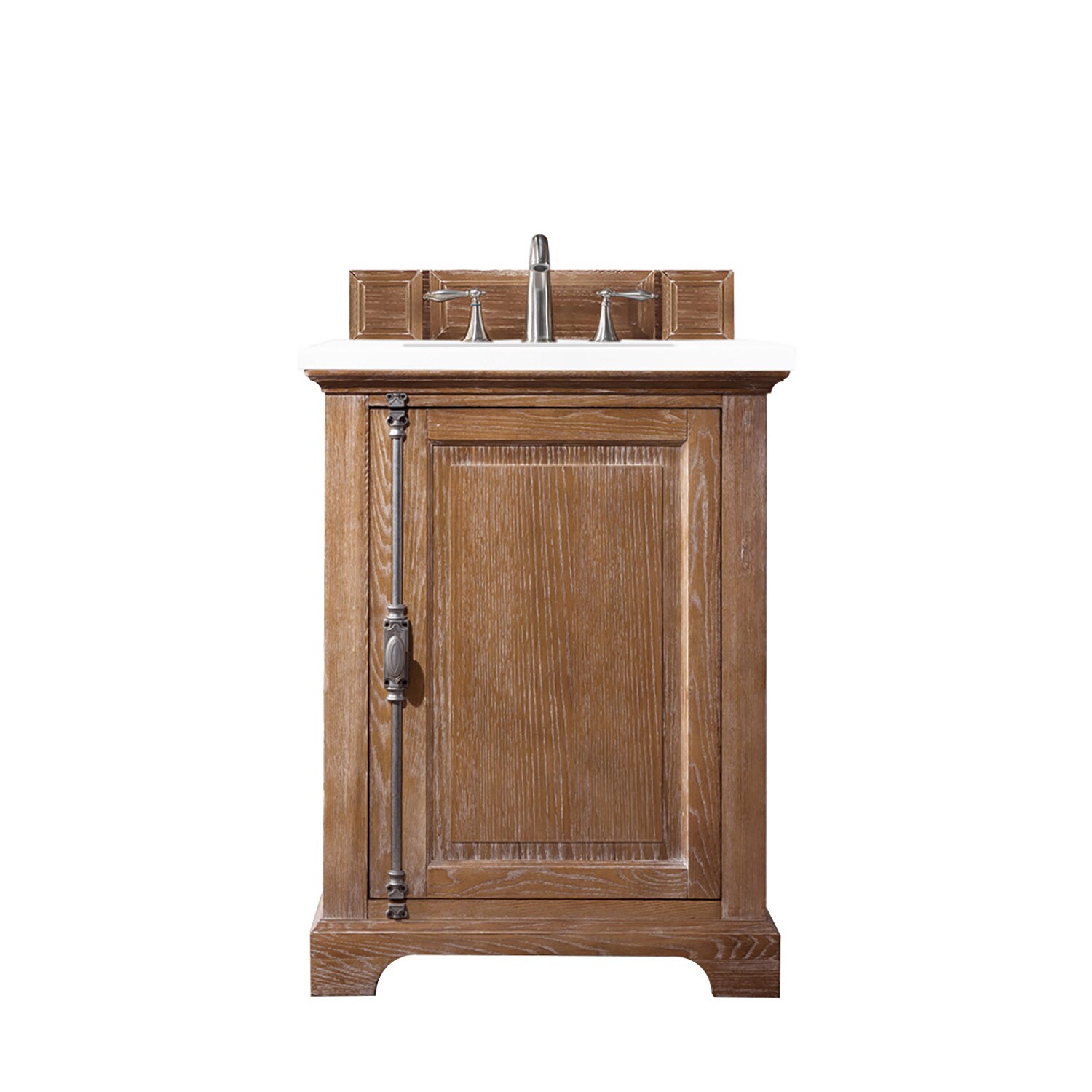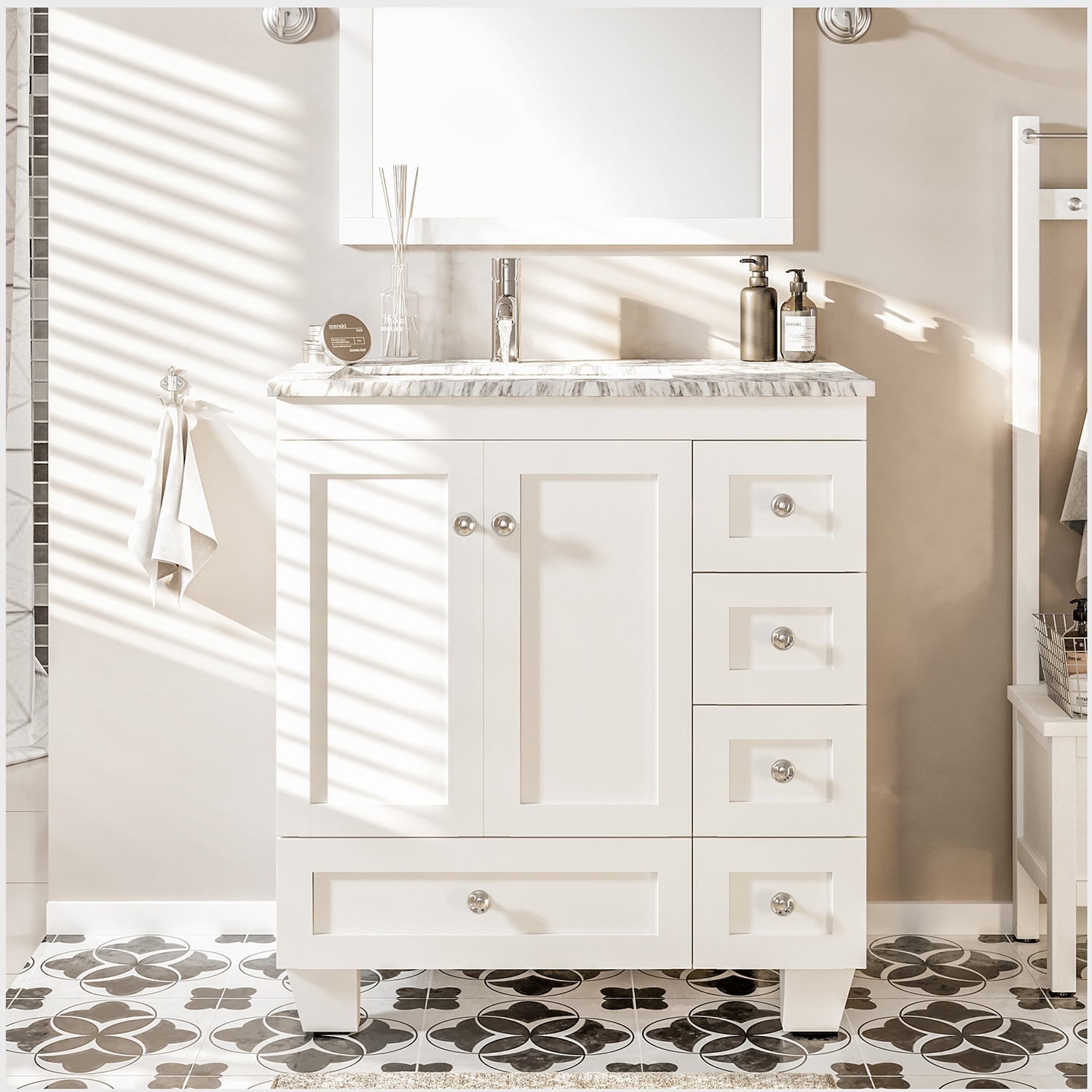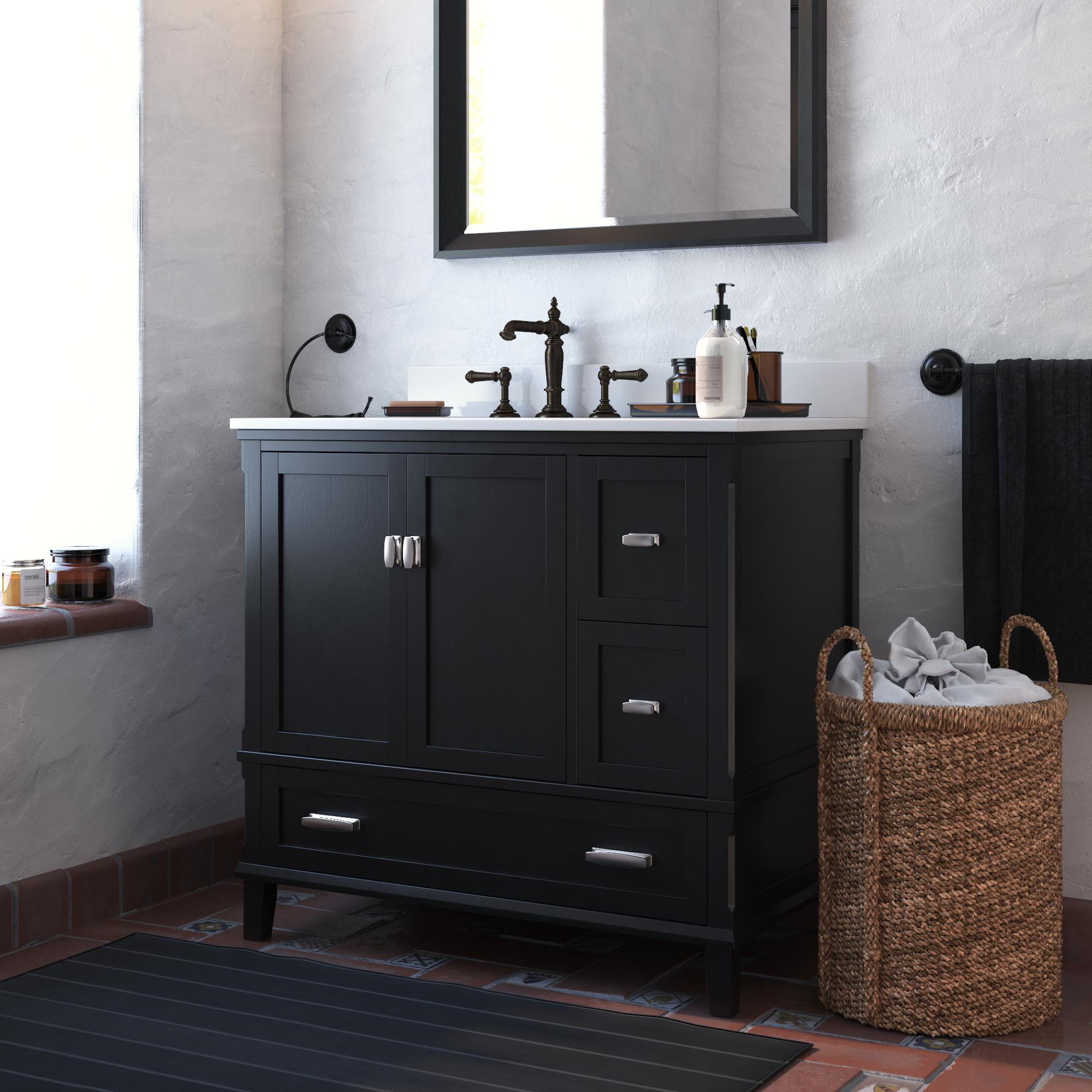Choosing the Right 26-Inch Vanity

A 26-inch vanity is a great option for smaller bathrooms, offering a balance of functionality and space efficiency. It provides ample counter space for everyday necessities while maintaining a compact footprint. When selecting a 26-inch vanity, consider your bathroom’s style, budget, and functional needs.
Comparing 26-Inch Vanity Materials, Styles, and Price Points, 26 inch wide bathroom vanity
Understanding the differences in materials, styles, and price points can help you make an informed decision. Here’s a comparison table highlighting key features:
| Material | Style | Price Point | Pros | Cons |
|---|---|---|---|---|
| Wood (Oak, Maple, Cherry) | Traditional, Modern, Farmhouse | $$ – $$$$ | Durable, aesthetically pleasing, versatile | Can be susceptible to water damage, requires regular maintenance |
| Laminate | Contemporary, Transitional | $ – $$ | Water-resistant, easy to clean, affordable | Less durable than wood, limited style options |
| Acrylic | Modern, Contemporary | $$ – $$$ | Non-porous, stain-resistant, easy to clean | Can be scratched, limited style options |
Key Features to Consider When Choosing a 26-Inch Vanity
Several essential factors influence your choice.
Countertop Material
The countertop material determines durability, aesthetics, and maintenance requirements. Popular options include:
- Granite: Durable, scratch-resistant, and heat-resistant. Offers a natural, elegant look.
- Quartz: Engineered stone, highly durable, stain-resistant, and low-maintenance.
- Marble: Elegant and unique, but requires more maintenance due to its porous nature.
- Laminate: Affordable, water-resistant, and easy to clean, but less durable than natural stone.
Storage Options
Consider your storage needs and the available space.
- Drawers: Provide organized storage for toiletries and other items.
- Cabinets: Offer ample storage for larger items.
- Open Shelves: Allow for easy access to frequently used items.
Sink Type
The sink type affects functionality and aesthetics.
- Undermount Sink: Seamless integration with the countertop, offering a clean, modern look.
- Top-Mount Sink: Traditional style, sits on top of the countertop.
- Vessel Sink: Stylish and unique, sits on top of the countertop, offering a focal point.
Visual Guide to 26-Inch Vanity Styles
Here’s a visual representation of different 26-inch vanity styles:
Traditional
26 inch wide bathroom vanity – Traditional vanities often feature intricate carvings, ornate hardware, and warm wood tones. They create a timeless and elegant ambiance in the bathroom.
Modern
Modern vanities emphasize clean lines, minimalist design, and sleek finishes. They create a contemporary and sophisticated look.
Farmhouse
Farmhouse vanities typically feature distressed wood, open shelving, and rustic hardware. They bring a cozy and inviting feel to the bathroom.
Contemporary
Contemporary vanities combine modern elements with a touch of traditional design. They offer a balanced and sophisticated look.
Maximizing Space in a Small Bathroom: 26 Inch Wide Bathroom Vanity

A 26-inch vanity can be a great solution for a small bathroom, but you’ll need to get creative to make the most of the limited space. By thinking vertically and strategically using mirrors, you can create a spacious and functional bathroom that feels larger than it is.
Utilizing Vertical Space
Vertical space is your best friend in a small bathroom. Here are some tips for making the most of it:
- Install shelves above the vanity. This is a great way to store towels, toiletries, and other bathroom essentials. You can choose open shelves for easy access or closed cabinets for a more streamlined look.
- Use a tall cabinet or tower. This is a great way to store items that you don’t use every day, such as extra towels or cleaning supplies.
- Install a medicine cabinet. A medicine cabinet is a great way to store toiletries and medications while keeping them out of sight.
- Hang a towel rack or hooks on the wall. This is a simple way to keep towels off the floor and free up valuable space.
Strategic Use of Mirrors
Mirrors can make a small bathroom feel much larger. Here are some tips for using mirrors strategically:
- Install a large mirror above the vanity. This will reflect light and make the room feel more spacious.
- Consider adding a second mirror to the opposite wall. This will create a sense of depth and make the room feel even larger.
- Use mirrors with interesting frames to add a touch of style.
Selecting Compact Fixtures
Compact fixtures can help to maximize space in a small bathroom. Here are some tips for selecting compact fixtures:
- Choose a compact toilet. Compact toilets are designed to save space without sacrificing functionality.
- Select a small shower head. This will help to prevent water from splashing on the walls and floor.
- Use a small sink. A smaller sink will free up space on the countertop.
Benefits of a 26-Inch Vanity in a Small Bathroom
A 26-inch vanity can be a great option for a small bathroom because it offers several benefits:
- Creates a more open feel. A smaller vanity will take up less space in the room, making it feel more open and airy.
- Improves accessibility. A smaller vanity can make it easier to move around the bathroom, especially for people with mobility issues.
- Offers ample storage. Even though it’s small, a 26-inch vanity can still provide plenty of storage space for your bathroom essentials.
Visual Example of a Small Bathroom Layout
Imagine a small bathroom with a 26-inch vanity placed against one wall. Above the vanity, a large mirror reflects light, making the space feel larger. On the opposite wall, a tall cabinet with shelves provides additional storage. A compact toilet and a small shower head are installed in the remaining space. The overall effect is a functional and stylish bathroom that maximizes space and creates a welcoming atmosphere.
Installation and Maintenance

Installing a 26-inch vanity is a straightforward process that can be accomplished with basic tools and some handyman skills. This section provides a step-by-step guide for installing a 26-inch vanity, including plumbing and electrical connections, along with essential maintenance tips to keep your vanity looking its best and functioning properly for years to come.
Installation
Installing a 26-inch vanity involves a series of steps that require careful planning and execution. It’s essential to have the right tools and materials on hand to ensure a smooth and successful installation.
- Prepare the Area: Before beginning the installation, clear the area around the vanity and protect the surrounding floor with a drop cloth. Turn off the water supply to the sink and disconnect the existing plumbing. If you are installing a new vanity in place of an existing one, remove the old vanity and dispose of it properly.
- Install the Vanity Cabinet: Position the vanity cabinet in its desired location, ensuring it is level and centered. Secure the cabinet to the wall using appropriate fasteners, such as screws or anchors. If your vanity is freestanding, you may not need to secure it to the wall.
- Install the Sink: Once the vanity cabinet is securely in place, install the sink. Most 26-inch vanities come with pre-drilled sink holes, making installation a simple process. Follow the manufacturer’s instructions for your specific sink model. Apply a bead of silicone sealant around the sink’s edge to prevent water damage.
- Connect the Plumbing: Connect the water supply lines to the sink faucet and the drain pipe to the vanity’s drain outlet. Use Teflon tape on the threaded connections to prevent leaks. Ensure all connections are tight and secure. Turn the water supply back on and check for leaks.
- Connect the Electrical: If your vanity includes an electrical outlet or lighting fixture, connect the wiring according to the manufacturer’s instructions. Ensure the wiring is properly grounded and secured. Turn on the power and test the electrical connections.
- Install the Hardware: Once the vanity, sink, and plumbing are installed, install the vanity’s hardware, such as the handles, knobs, and mirror. Follow the manufacturer’s instructions for installation.
- Clean and Inspect: After the installation is complete, clean the vanity thoroughly to remove any dust or debris. Inspect all connections and components to ensure everything is secure and functioning properly.
Maintenance
Regular maintenance is crucial to prolonging the life of your 26-inch vanity and preventing damage. Here are some essential maintenance tips to keep your vanity looking its best and functioning properly:
- Clean Regularly: Clean your vanity regularly using a mild cleaner and a soft cloth. Avoid harsh chemicals that can damage the finish. Clean the sink, countertop, and cabinet doors and drawers. Pay particular attention to the areas around the sink and faucet to prevent water damage.
- Prevent Water Damage: To prevent water damage, ensure that all plumbing connections are tight and secure. Inspect the faucet and drain regularly for leaks and repair them promptly. Use a drain stopper when filling the sink to prevent water from overflowing.
- Inspect and Repair: Regularly inspect the vanity’s hardware, such as the handles, knobs, and hinges, for signs of wear or damage. Replace or repair any damaged parts promptly. Check the faucet for leaks and ensure it operates smoothly.
- Troubleshoot Common Issues: If you encounter any issues with your vanity, troubleshoot them before calling a professional. For example, if the faucet is leaking, check the faucet’s washers and O-rings for wear or damage. If the drain is slow, check for clogs and clear them using a plunger or drain snake.
Tools and Materials
- Tools: A set of basic tools, such as a screwdriver, wrench, level, tape measure, and drill, will be needed for installation. If you plan to connect electrical wiring, you will also need a voltage tester and wire strippers.
- Materials: The materials needed for installation will vary depending on the specific vanity model and your plumbing and electrical connections. However, you will likely need silicone sealant, Teflon tape, screws or anchors for mounting the vanity, and any necessary plumbing and electrical fittings.
